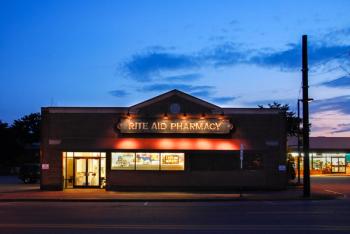
AbbVie's Investigational Hepatitis C Treatments Show High Response Rates
A trio of studies from AbbVie provides good news for patients with hepatitis C virus, including those with comorbid HIV or cirrhosis.
A trio of studies from AbbVie provides good news for patients with hepatitis C virus (HCV), including those with comorbid HIV or cirrhosis.
The first study, TURQUOISE-I, revealed that patients co-infected with genotype 1 HCV and HIV-1 who received ombitasvir/ABT-450/ritonavir and dasabuvir with ribavirin (RBV) achieved sustained virologic response (SVR) rates of 93.5% at week 12 and 90.6% at week 24.
"TURQUOISE-I is one of the few dedicated studies looking specifically at this population, who are seen in everyday clinical practice,” said Barry Bernstein, MD, vice president of infectious disease development for AbbVie, in a press release.
The second study, CORAL-I, reported that treatment-naïve, non-cirrhotic liver transplant patients with recurrent genotype 1 HCV achieved an SVR rate of 97.1% after 12 weeks of treatment with ombitasvir/ABT-450/ritonavir and dasabuvir with RBV, and a 97.1% SVR rate after 24 weeks.
"Recurrence of HCV infection in the new graft post-liver transplantation is universal in those that have the virus prior to transplantation, and can be associated with an aggressive disease course," said Paul Kwo, MD, medical director of liver transplantation and professor of medicine at the Indiana University School of Medicine, in a press release. "The high SVR rates seen in CORAL-I are promising and offer valuable information as we continue to assess this regimen within this specific patient population."
In the third study, PEARL-I, 100% of HCV genotype 4 (GT4) patients achieved SVR rates at 12 weeks of treatment comprised of ABT-450/ritonavir and ombitasvir with RBV.
The direct-acting antiviral treatment with RBV demonstrated success across non-cirrhotic patients with chronic genotype 1b (GT1b) and GT4 HCV who were new to therapy or did not respond well to previous treatment with pegylated interferon and RBV. In addition, a little more than 90% of treatment-naïve patients achieved SVR at week 12 without the use of RBV, the phase 2b study found.
Some of the adverse effects of treatment were headache, asthenia, fatigue, nausea, and insomnia.
"As many as 34 million people around the world are living with genotype 4 chronic hepatitis C," Dr. Bernstein said in a separate press release. “The data from PEARL-I represent another important step forward in realizing our commitment to advancing scientific knowledge in hepatitis C with the ultimate goal of providing treatment options to as many patients as possible."
Newsletter
Stay informed on drug updates, treatment guidelines, and pharmacy practice trends—subscribe to Pharmacy Times for weekly clinical insights.




















































































































































































































